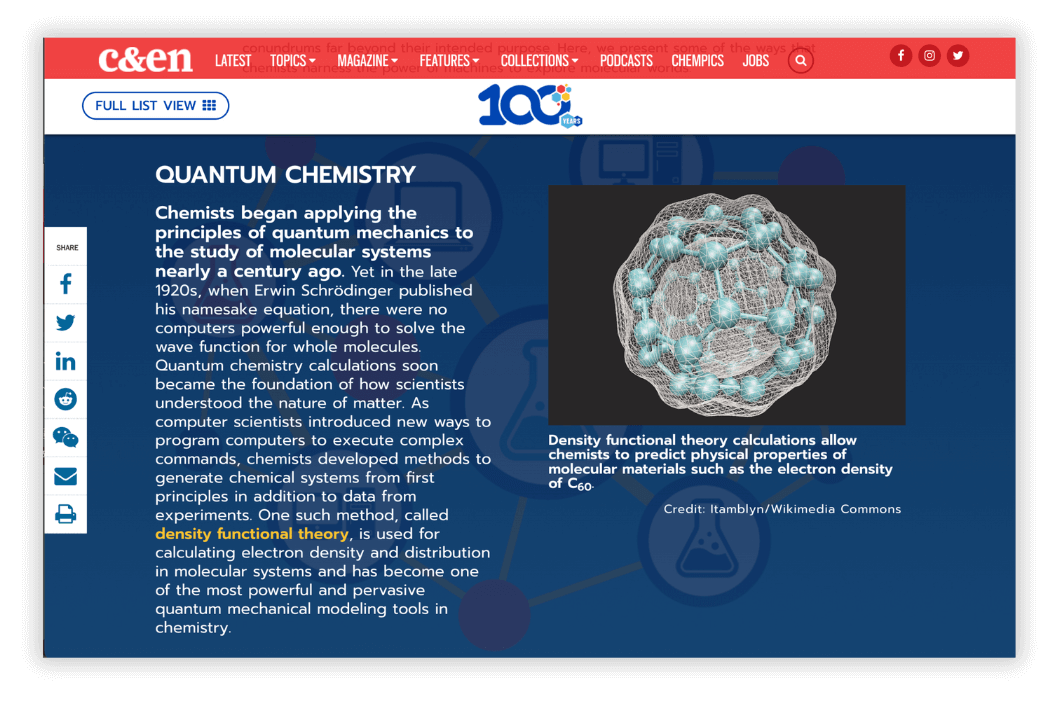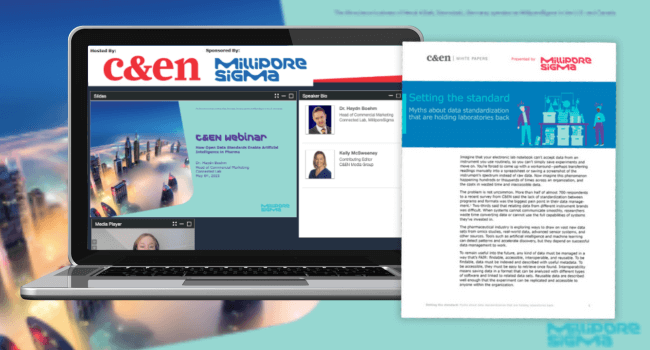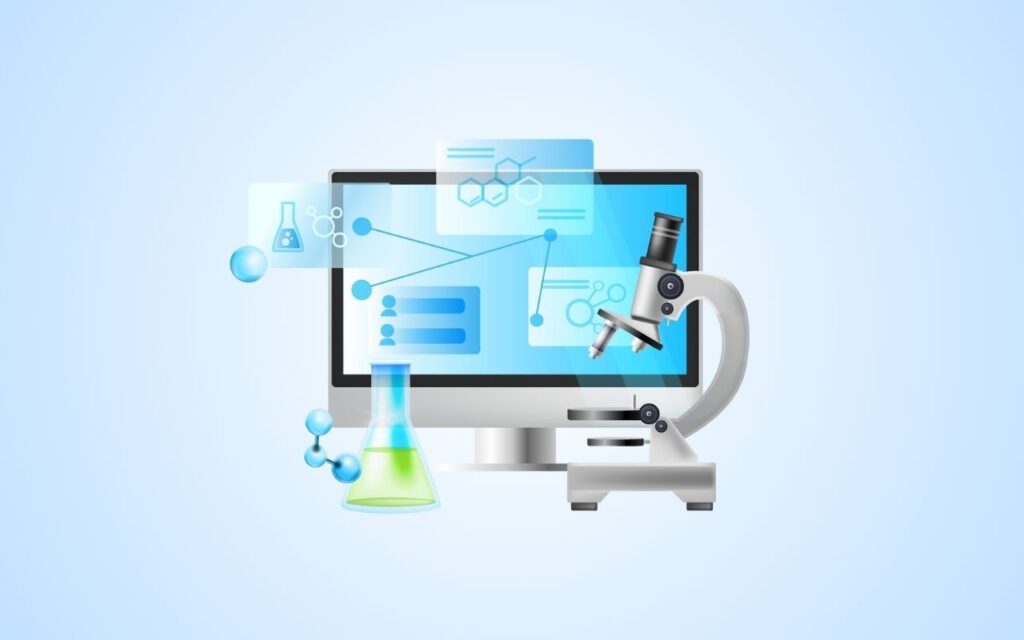Picture a laboratory in your mind. Do you imagine white-coated scientists pipetting by hand and writing observations in spiral-bound notebooks? Or do you envision whirring machines performing tasks while researchers gather data outputs and ideate their next experiment? While scientists still wear lab coats and mix solutions, the latter vision may be more accurate as digitalization has transformed the chemical industry.

“Automation” has been a widely recognized term for decades, but “digitalization” is a newer buzzword that has taken the scientific world by storm. While the traditional foundation of the scientific method and human innovation remains the same, technologies ranging from cloud-based data storage and analysis to fully automated analytical instruments have forever changed laboratory operations.
B2B science marketers don’t need to keep track of every new technology that enters the laboratory. However, being aware of the current reality keeps your messaging timely and relevant to your target audiences. In this article, we’ll help you understand lab digitalization and discuss how to incorporate this trending science topic into your marketing.
Imagining the “Lab of the Future” with Digitalization

A lab can become more digital in multiple ways. One revolves around data – how it’s stored, shared, and analyzed – and the other involves physical machines and instruments operated by computers.
Data Management: Security, Searchability, and Collaboration
Scientific instruments are now producing so much data that the International System of Units (SI) recently had to establish new prefixes to describe these vast quantities of digital information. Instead of filling millions of paper lab notebooks with data and lab operations tracking, savvy scientists use software to manage their results.
Definitions to Know:
- Electronic Laboratory Notebooks (ELN): These are applications designed to fill the same role as a traditional laboratory notebook. While these were once simple tools that were little more than computerized paper, they now contain many advanced functionalities like synchronizing with equipment, search tools, and artificial intelligence.
- Laboratory Information Management Systems (LIMS): A sample passes through many hands during its lifecycle. A LIMS tracks the status of the sample and makes sure team members are aligned on next steps and responsibilities. However, a wide range of software can fit into the LIMS category, so don’t assume your audience knows exactly what a LIMS can or cannot do.
- Chromatography Data Systems (CDS): These are systems designed to manage chromatography data, which is commonly used in R&D across many industries. CDS are also useful for automating the collection and processing of chromatography data.
With backups and cloud-based storage, key experimental data is no longer vulnerable to spills or misplaced notebooks. Shared platforms and integrated systems allow researchers to search for information and work on projects collectively. Streamlined collaboration not only enhances overall productivity but also promotes a cohesive working environment where ideas flow freely.
However, implementing and using these tools is not trivial. A survey from TetraScience found that bench scientists in biopharmaceutical labs spend almost 50% of their time on manual data extraction and transformation. Some of the software is clunky, with a steep learning curve. Software and equipment vendors typically use proprietary file formats, which may not play nicely together. Overall, this means that scientists and research organizations may be looking for solutions to simplify their data management, even if they already have a mature tech stack.
Automation and Technology Integration
Automation – driven by advances in AI and robotics – liberates scientists from mundane, repetitive tasks. This freedom enables them to focus on the creative and analytical aspects of their work.

B2B marketers can champion solutions that tout efficiency gains, precision, and the reduction of human errors, all contributing to scientific advancement. For example, C&EN BrandLab helped MilliporeSigma create a sponsored article and quiz highlighting how their digital solutions can minimize motion waste in the lab.
On top of the advantages provided by each digital tool, overarching systems like the Internet of Things (IoT) can provide seamless integration of disparate systems. IoT allows digital components to transfer data and “talk” to each other without human intervention. This empowers laboratories to function cohesively, maximizing efficiency and harnessing the full potential of interconnected technologies.
Audiences Care About Lab Digitalization in Chemistry for Different Reasons
Within the labyrinth of laboratory digitalization, B2B marketers can find eager audiences throughout a company, including:
Laboratory Directors and Managers: Operations-focused lab members are drawn to solutions that optimize workflows, ensure compliance, and drive cost efficiencies. They’ll appreciate practical content like guides on integrating new technologies and how to follow industry regulations.
Scientists and Researchers: Hands-on innovators want products that free up time and energy to focus on discoveries. Tailored content emphasizing technological advancements and streamlined processes resonates with this audience.
IT Professionals and Digital Transformation Leaders: These are people who will be excited about digital products themselves, not just what they can accomplish. They’re also in charge of helping other team members navigate the integration and implementation of digital solutions. Content spotlighting interoperability, cybersecurity, and scalable tech solutions will help you keep their attention. Experts interviewed by C&EN have already called for large-scale integration and standardization – IT and tech experts will want content that helps them stay abreast of that progress. It is also worth mentioning that these folks probably know more about computers than they do about chemistry, so adjust your positioning and messaging to fit this audience.
Strategic Engagements and Content Offerings
In the dynamic landscape of lab digitalization, B2B marketers can leverage an array of engagement strategies and content formats to connect with their target audience effectively. A few ideas include:
Email Marketing
Few channels give you as much audience-specific customizability as email marketing. Through personalized campaigns, marketers can deliver tailored content directly to decision-makers who recently purchased a specific instrument or ELN, addressing specific pain points and showcasing how your solutions align with their labs’ evolving needs.

Case Studies
Case studies can help you showcase your industry expertise in digitalization and demonstrate how your solutions have already proven effective in labs. Through written reports or informative webinars, you can highlight real-world instances where laboratory digitalization brought tangible improvements in efficiency, cost-effectiveness, or scientific breakthroughs.
Webinars, Workshops, and Round Table Discussions
Given the rapid pace of technological change, many leaders and IT professionals are eager to stay on top of the latest trends. Live events create a “Don’t miss it” sense of urgency and attract people interested in networking and learning from experts. You can generate leads and position your company’s team as thought leaders by presenting or moderating panels on relevant topics. Remember to follow webinar best practices!


















